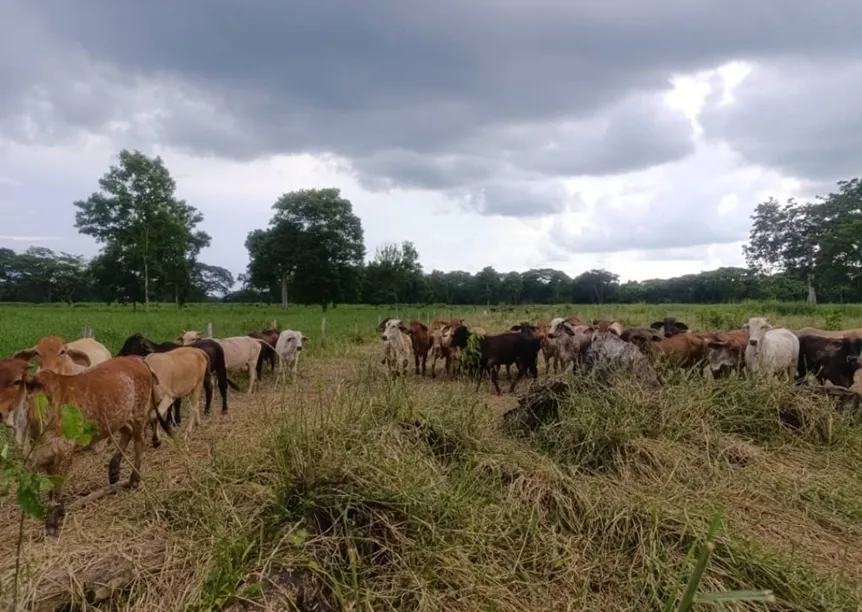The earth, cradle of life and sustenance of agriculture, is a complex and delicate ecosystem, however, this vital resource faces a silent and growing threat that is soil compaction. This phenomenon, characterized by an increase in bulk density and a decrease in porosity, is a multifaceted challenge that negatively affects soil structure, plant development and, ultimately, agricultural productivity.

Soil compaction manifests itself in various ways and has multiple causes, the repeated passage of heavy machinery, such as tractors and combine harvesters, is the main mechanical factor, the weight of these equipment exerts considerable pressure on the soil, collapsing the macropores and microaggregates, which are essential for the circulation of water and air. In addition, over-tillage, especially when the soil is wet, aggravates the problem by pulverizing the soil structure and breaking down natural aggregates, natural factors such as soil texture also influence; soils with a high silt or clay content are more prone to compaction than sandy soils, due to their lower structural stability.
The consequences of compaction are vast and harmful, on a physical level, the reduction of soil porosity limits the infiltration of water, which leads to an increase in surface runoff and, consequently, to greater erosion, this loss of fertile soil not only decreases the quality of the land, but also contributes to the pollution of water bodies by sediments and nutrients. The decrease in pore space also restricts soil aeration, which creates anaerobic conditions that are harmful to plant roots and soil microbial life.
The biological impact of compaction is equally severe, the lack of oxygen in the soil inhibits the respiration of the roots, which limits their growth and ability to absorb water and nutrients, the roots, encountering a dense layer of compacted soil, are forced to grow horizontally instead of deepening, resulting in a superficial root system and less resistant to drought. Compaction also negatively affects the soil microflora and microfauna, organisms vital for the decomposition of organic matter and nutrient cycling, the reduction of biological activity decreases soil fertility in the long term.

At the economic level, the effects of compaction translate into significant losses for farmers. Poor crop growth, reduced nutrient uptake and increased susceptibility to diseases and pests result in lower yields. In addition, the farmer is forced to invest more in fertilizers to compensate for the low availability of nutrients and in the use of more powerful machinery for tilling, which increases production costs. In extreme cases, compaction can lead to the abandonment of plots of land, as they become unprofitable for agriculture.
To combat compaction, it is crucial to adopt a comprehensive approach that combines preventive and corrective soil management practices, prevention is the most effective strategy, this includes limiting heavy machinery traffic, using low-pressure tires to distribute weight, and reducing tillage (conservation tillage) or adopting direct seeding. These practices help to maintain the structure of the soil and protect aggregates from collapse. In addition, the planning of agricultural operations to avoid working on the soil when it is saturated with water is essential.
The corrective techniques, although more expensive and laborious, are necessary in soils that are already severely compacted, subsoiling or deep chisel plowing are practices that consist of breaking the compacted layers of the soil to a greater depth, improving the penetration of the roots and the infiltration of water. However, these operations should be carried out with caution and in the right humidity conditions to avoid further damaging the soil structure. The incorporation of organic matter into the soil, through the planting of cover crops and the use of green fertilizers, is also an effective strategy to improve soil aggregation and its resistance to compaction.
| Final considerations |
|---|
In conclusion, agricultural soil compaction is a serious problem that requires immediate attention, its negative impact on agricultural productivity, environmental sustainability and economic profitability is undeniable, the adoption of sustainable soil management practices, such as conservation agriculture and the use of cover crops, not only prevents compaction, but also improves the overall health of the soil in the long term. Awareness of this problem and the implementation of mitigation strategies are crucial steps to ensure the viability of agriculture and food security in the future.
| Bibliographic references |
|---|
- Parker, R. (2000). The science of plants. Paraninfo Editions. Spain
Sources
- Photography and images: All photographs are the property of the author @amestyj.
- Agrotecnia banner: made by the author @amestyj with own images
- Hive Banner: Designed by the author @amestyj with image owned by hive.


